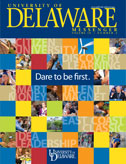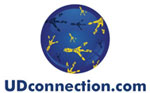Conservationists model smart shopping
RESEARCH | If there was ever a time for conservationists to shop smart, this is it. Across the country, states face budget shortfalls, and tough choices confront land conservationists, who shop the American landscape with big ambitions but slim wallets.
Now, researchers at UD and The Conservation Fund have designed a computer-based decision-making tool to help conservationists evaluate projects for the best dollar value and allow government leaders to comparison shop effectively.
“We all want the most bang for our buck, and conservation is no different,” says Will Allen, of the nonprofit Conservation Fund. “Are you spending too much money on expensive projects—what some call budget sponges—or are you getting real value? With public budgets so tight, government officials must be able to justify how they’re spending these dollars wisely.”
Until now, conservation organizations have chosen which lands to conserve based primarily on a goal of saving high-priority land that’s valued for agriculture, open space or wildlife habitat. The new technique developed by Allen and Kent Messer, an economist in UD’s College of Agriculture and Natural Resources and Lerner College of Business and Economics, uses optimization strategy to evaluate projects.
They have developed and applied a computer model that turns raw data such as costs, benefits and budget constraints into a user-friendly spreadsheet yielding comparison-shopping conclusions.
One agency that has used the computer model is the Baltimore County Agricultural Land Preservation Program. Officials there estimate that, in the past three years, this optimization tool has helped protect an additional 680 acres of high-quality agricultural land at a cost savings of about $5.4 million.





